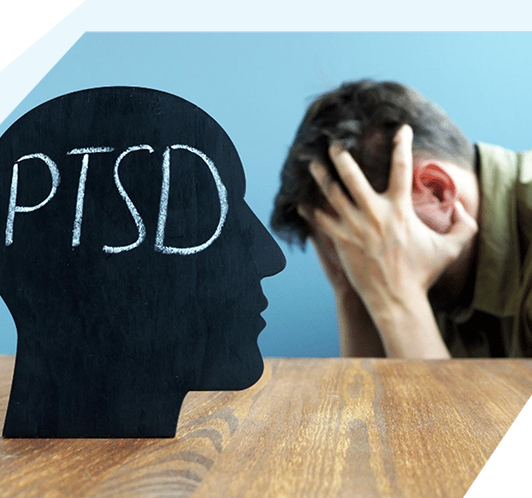Alcohol Rehab Treatment for
Veterans in Greenbelt Maryland
Alcohol Treatment Programs
For Military Veterans
The stresses of military culture expose active service members to a lot of unique risks. Their time in the military can put them at greater risk of developing drug or alcohol addiction, for example. Here we will talk about the connection between substance abuse and military service.
Deployment is oftentimes associated with things like unhealthy drinking habits, smoke inhalation, and drug use. This is why some veterans actually develop drug addiction or alcohol addiction later in life.
Sadly, the existing zero tolerance policies and mandatory random drug testing that are designed to prevent drug abuse can also add to the stigma surrounding addiction.LEARN MORE
Substance Abuse
among Veterans
Substance abuse is a very common problem among veterans. This is due to the unique and dangerous situations they experienced during their time in the military.
Around 25% of soldiers who served in Afghanistan and Iraq were diagnosed with depression, LEARN MORE


Alcohol and Drug Abuse
Effects for Veterans
After leaving the military, most veterans take some time to readjust to their regular life. They need time to reintegrate into their old lifestyle, get reacquainted with friends and family members, and go back to living in their community. This, however, is easier said than done. LEARN MORE
What is Post-Traumatic
Stress Disorder?
Post-traumatic stress disorder is a very common problem for veterans, but what is it exactly? PTSD is a psychiatric disorder that typically occurs in people who have gone through or witnessed something traumatic. It can be a natural disaster, a terrorist act, a serious accident, sexual trauma, extreme violence, serious injury, or war. LEARN MORE


What is Military
Sexual Trauma?
According to VA, military sexual trauma or MST is sexual trauma, sexual harassment, or sexual assault that is experienced during military service. This includes any form of sexual activity during military service in which the person is involved against their will. LEARN MORE
Other Social and Mental
Health Issues Faced by
Veterans
On top of these conditions mentioned above, veterans face other challenges when it comes to their social life, their reputation, their mental health, their relationships, etc.
Veteran homelessness is a huge problem for a lot of former military personnel. There are roughly 40,000 former soldiers in the US who are homeless. LEARN MORE

How to Identify Substance Abuse in
Veterans
Identifying the signs and symptoms of alcohol abuse and drug abuse in veterans is the first step towards helping them recover. Doing your research is a good way to know more about addiction, alcohol abuse,
Alcohol Rehab for Veterans:
How Does it Work?
Once the veteran has accepted that they need help for their addiction, it’s time to choose a treatment program and facility. Knowing what to expect from alcohol rehab for veterans should help you with this decision.
There are many treatment options available such as inpatient and outpatient treatment programs. But it’s all a matter of choosing which one works best for your loved one. Ideally, you should find a treatment center that offers addiction treatment specifically designed for veterans. LEARN MORE
About Greenbelt
Rehab Treatments In Greenbelt Maryland
- Alcohol Addiction Greenbelt
- Alcohol Detox Greenbelt
- Alcohol Rehab Greenbelt
- Alcohol Rehab for Veterans Greenbelt
- Finding the Best Alcoholism Rehab Near Me in Greenbelt
- AA Free & Confidential Alcoholics Anonymous Helpline Greenbelt
- Benzodiazepines Rehab Near Me Greenbelt
- Christian Drug Rehab Greenbelt
- Drug Rehab-addiction Treatment Centers Near You Greenbelt
- Dual Diagnosis Treatment Centers Near You Greenbelt
- (EAP) Employee Assistance Programs Greenbelt
- Fentanyl Greenbelt
- Find 30-Day Inpatient Drug Rehabs Near You! Greenbelt
- Find 60 Day Inpatient Drug Rehabs Near You! Greenbelt
- Find 90 Day Inpatient Drug Rehabs Near You! Greenbelt
- Hydrocodone Greenbelt
- Inpatient Drug and Alcohol Rehab Near Me Greenbelt
- Inpatient Drug Rehab Treatment Program Greenbelt
- Luxury Drug & Alcohol Addiction Treatment Centers Greenbelt
- Mental Health, Addiction, and Drug Rehab Greenbelt
- NA Hotline, Narcotics Anonymous 24 Hour Hotline Greenbelt
- Online Therapy|Mental Health|Substance Abuse|Dual Diagnosis Greenbelt
- Mental Health Online Therapy | Teletheraphy Greenbelt
- Outpatient Drug Rehab Near Me Greenbelt
- Oxymorphone Greenbelt
- Prescription Drugs Greenbelt
- Student Drug Rehab Greenbelt
About Maryland
Browse by State
- ALABAMA
- ALASKA
- ARIZONA
- ARKANSAS
- CALIFORNIA
- COLORADO
- CONNECTICUT
- DELAWARE
- FLORIDA
- GEORGIA
- HAWAII
- IDAHO
- ILLINOIS
- INDIANA
- IOWA
- KANSAS
- KENTUCKY
- LOUISIANA
- MAINE
- MARYLAND
- MASSACHUSETTS
- MICHIGAN
- MINNESOTA
- MISSISSIPPI
- MISSOURI
- MONTANA
- NEBRASKA
- NEVADA
- NEW HAMPSHIRE
- NEW JERSEY
- NEW MEXICO
- NEW YORK
- NORTH CAROLINA
- NORTH DAKOTA
- OHIO
- OKLAHOMA
- OREGON
- PENNSYLVANIA
- RHODE ISLAND
- SOUTH CAROLINA
- SOUTH DAKOTA
- TENNESSEE
- TEXAS
- UTAH
- VERMONT
- VIRGINIA
- WASHINGTON
- WEST VIRGINIA
- WISCONSIN
- WYOMING

